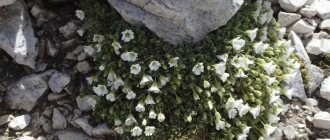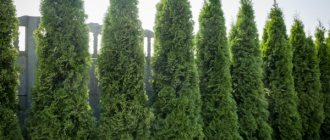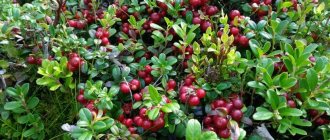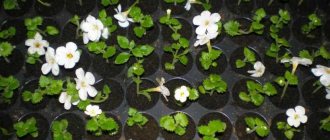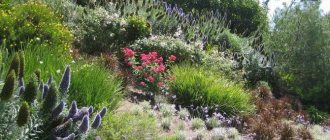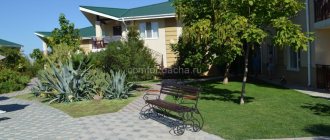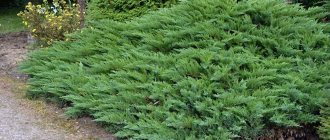Coniferous plants fall in love with many summer residents and gardeners, because they give an incredible aroma and harmoniously complement the landscape design of the site. Growing such crops is a real pleasure, the main thing is to choose the right and beautiful plants. Thuja occidentalis Smaragd is a beautiful coniferous representative that will easily complement any territory and will delight you with its spectacular forms and beautiful green shades. In this article we propose to familiarize yourself in detail with such a coniferous representative.
Thuja western Smaragd: description and size of the plant
Thuja Occidentalis Smaragd is a coniferous tree that has a narrow conical crown, reaching a diameter of almost 2 meters. The needles of this variety are very beautiful - they are scaly, shiny, and painted in a dark emerald color.
The height of an adult Thuja smaragd plant reaches up to 5 meters. This variety is considered the best hybrid of Thuja Conical. Over the course of a year, the conifer can grow up to 20 centimeters in height and up to 10 centimeters in width. At the age of 10 years, its height reaches 2.5 meters. But this culture is extremely easy to care for, which is why many gardeners love it so much. It adapts to almost any soil and growing location.
The optimal width of Thuja Smaragd allows it to be used as a single solitaire plant.
The excellent winter hardiness of the garden crop makes it a universal crop for planting in most regions. In areas where there is heavy snowfall in winter, it is best to shake off the crop to prevent damage to the crown under the weight of the snow.
Agricultural technology
Landing
It is better to plant thuja in spring or summer.
It is not advisable to plant in the fall, because the seedling may not have time to grow stronger and will not acclimatize. Although thuja occidentalis is unpretentious, it is still recommended to plant it in well-drained, fertile soil. You can add humus or turf soil . Adding sand will have a good effect on providing the roots with air and water. Before planting the plant, you need to pour wood ash and a little of any complex fertilizer into the bottom of the prepared hole.
If the area is prone to waterlogging, a hole is dug 30-40 cm deeper than necessary, this place is filled with drainage (gravel, expanded clay, etc.).
The plant is planted so that the root collar is level with the soil level. Because the plant does not tolerate both deepening and “high” planting. Since fresh, loosened soil tends to settle significantly over time, this must be taken into account when planting. The bottom of the hole needs to be compacted, and after the plant is planted, you need to add more soil if it has sagged too much at the base of the seedling.
If a seedling is purchased with a lump of earth, you need to try not to destroy it when planting, as this will be an additional injury to the root system.
Planted thuja occidentalis seedlings must be thoroughly watered to remove air voids near the roots.
Before the first wave of growth occurs, which serves as a sign of the plant taking root in a new place, young plants should be protected from unfavorable conditions - summer heat and severe frosts in winter.
Care
Thuja Smaragd is quite unpretentious, so further care is not labor intensive and is accessible even to an unqualified person.
Agrotechnical care measures include:
- In hot years, moderate watering is desirable, but the main thing is not to overdo it - thuja tolerates a lack of moisture more easily than its excess;
- In summer it is possible to use sprinkling. This increases the decorativeness of plantings and frees plants from dust settled on the needles;
- Loosening the soil in the tree trunk area. It can be seen to a depth of no more than 10 cm, since thuja is a plant with a superficial root system;
- In autumn, you can mulch the soil in a 5-8 cm layer with sawdust or chopped bark. This is done to protect the roots from frost and the accumulation of moisture in the soil during the spring period;
- In winter, pyramidal shapes are tied with twine. This is done in order to avoid damage to the branches under the weight of the fallen snow.
Reproduction
Thuja reproduces well both with the help of seeds and vegetatively .
But do not forget that it is impossible to propagate by seeds forms of thuja with exotic properties (such as unusual color of needles, weeping crown shape, etc.), since the seedlings are heterogeneous and rarely inherit the decorative properties of the mother tree. Natural forms of thuja are propagated using seeds or when new varieties are developed. It is also worth noting that growing from seeds is a long process and requires attention. Since the seedlings are quite capricious and have low growth rates.
Recent Entries
Chainsaw or electric saw - what to choose for the garden? 4 mistakes when growing tomatoes in pots that almost all housewives make Secrets of growing seedlings from the Japanese, who are very sensitive to the soil
The positive side of propagation by seeds is that plants grown from seeds are best adapted to the conditions of a particular site (soil composition, climate, lighting conditions).
Sowing is carried out to a depth of about 1-2 cm . The desired soil composition is one part peat, one part any light fertile soil, two parts sand.
The seeds of most thujas do not require stratification (keeping the seeds at low temperatures). But after stratification, seed germination will be more consistent. Therefore, it will be optimal to sow in the fall.
After the first shoots appear, care consists of loosening the soil, timely watering, thinning the crops (the strongest and most developed ones should be left), shading on sunny days, and snow retention in winter to avoid freezing of the crops. Do not forget that seedlings do not have a developed root system and do not tolerate any deterioration in external conditions. This leads to their mass death.
Thuja Smaragd is planted in a permanent place or in a container no earlier than 2-3 years of age, when they are sufficiently strong.
Vegetative method of propagation. Cuttings are used for it . Almost all types and forms of thuja are good in this way.
Cuttings are harvested in the spring, before the active growth phase. To do this, cut off mature branches about 12 cm long and about one centimeter thick. The cut is made at an angle of 45 degrees. Some experts recommend not cutting, but tearing off the cutting so that a small piece of bark and wood of the mother plant remains on it.
After this, the cuttings are cleared of all branches, leaving them only at the top. Afterwards, it is advisable to treat the cutting with any rooting stimulant (they are now widely available for sale) and plant it in the ground. The soil is prepared from a mixture of sand, vermiculite and humus in equal proportions. It is necessary to have drainage holes in the planting container to remove excess water when watering. The soil around the cuttings is lightly compacted and watered. It is advisable to cover the planted plants with a thin film for the first time in order to avoid the plants drying out.
A sign of rooting of the cuttings is the beginning of active formation of new shoots . But you should not rush to plant the plants, since at first the new roots are still very fragile and there is a danger of damaging them.
Difficulties in growing and diseases of Thuja Smaragd
Coniferous plants can be attacked by diseases and pests. For this reason, it is necessary to know how to deal with such parasites. The main “enemies” of the culture are considered to be fungus, false scale insects and thuja aphids. The fungus can be recognized by its brown shoots and yellowed needles. In this case, you will need to remove the shoots that have been infected and burn them. The healthy part is treated with Fundazol.
Photo of sick Tuya
Thuja Aphid is considered a dangerous enemy for coniferous plants. To solve this problem, it is better to use the drug "Karbofos". In the summer, you can protect plants with Actellik and Rogor. The false scale insect can be recognized by the growths that form on the tree; visually they resemble cones. To combat such a pest, the drugs “Karbofos” and “Rogor” are also suitable.
Thuja care in spring: pruning
Start by inspecting and removing dead stems or damaged branches. Remove brown or withered needles. For new plantings, it is important to trim back the top shoots lightly, even if the hedge has not yet reached the level you want. This creates a dense structure and makes the hedge much better and more durable. Just trim the ends of the branches a few times a year. This is unlikely to slow growth, but the result will be a stunning hedge.
As you trim, pay particular attention to keeping the front of the hedge angled slightly inward. Never cut so that the top is wider than the bottom.
How to propagate Thuja Smaragd
The simplest method is cuttings. Initially, you will need to remove the needles on the bottom of the branches. The bottom is also slightly protected from the bark. After this, the cuttings are placed in a solution containing a growth regulator (Epin is excellent).
This video describes in detail the reproduction of Thuja western Smaragd
River sand or drained soil is used as a substrate where plants will take root. You can also prepare peat, leaf soil with the addition of sand in identical proportions.
The soil is laid out in shallow containers. Containers must have drainage holes. Expanded clay and pebbles must be placed at the bottom. Afterwards, a layer of soil is laid.
The cuttings are removed from the solution to stimulate growth, then they are immersed in Kornevin for 10 seconds. The next step is to plant the cuttings in the ground at an angle of 45 degrees. Depth – up to 2 centimeters.
A shelter made of glass or plastic is formed on top to create a greenhouse effect. The cuttings are stored in a bright and warm room. But keep in mind that you will need diffused light. Direct ultraviolet rays will cause the death of the plant.
It is recommended to water the soil only after the top layer has dried. Water in large quantities can be detrimental to cuttings. For irrigation it is better to use a spray bottle.
After 14 days, the cuttings are planted for growing in a separate container or shkolki (special beds). Here the crops will develop until they can be planted in open ground.
Possible tree diseases and methods of treating them
In addition to frostbite, there are several other reasons why thuja needles may turn yellow. If, with the onset of spring, after removing the covering material, you see not a bright green plant, but a yellowed one, first make sure that the alkaline balance of the soil is not disturbed. Special indicators for these purposes are sold in garden stores.
The cause of the increased alkali content may be your pet. Its urine can destroy a tree. Therefore, make sure that your dog stays away from the thuja. To bring the soil back to normal, add a little peat or compost. In addition, a weakened plant will need stimulation. It needs to be fed two to three times a week.
Thuja fungal disease
Another reason for yellowing is spring sunburn. To begin with, you should remove all damaged needles with your hands. Then treat thuja with fungicides once every 2-3 weeks. In addition, spray the tree crown with plain water and stimulants. It may take two to three years for the thuja emerald to return to its original appearance and for its needles to return to an emerald hue.
Fungal diseases of thuja smaragd:
- Brown shoots. The fungus attacks the plant in early spring. As a result, the crown of the tree turns brown. Gradually the shoots die off. To prevent this from happening, the tree must be treated with a foundation solution.
- Rust. This is an attack on young trees. The needles darken and black dots appear on them. The reason is insufficient care for the thuja. Wood should be treated with preparations only after frost. It is recommended to spray thuja with Bordeaux mixture.
- Late blight. One of the most dangerous diseases for all conifers. If the groundwater is too close to the surface of the earth, and you, moreover, have not drained it well, there is a high probability that the tree will be affected by this disease. The fungus begins to infect the roots of the tree and gradually moves higher. As a result, the trunk turns gray, the needles change color, and the plant dies. If you notice that the roots of the thuja have begun to rot, you will not be able to save the tree. It needs to be dug up. Be sure to replace the soil in which the plant was located. Otherwise, fungal spores will remain in your garden plot. Fungicides are used to prevent the disease.
- Mulberry mushroom. The disease can affect thuja if it has damage, broken branches, for example. The spores penetrate the plant and form growths on it. The thuja begins to dry out and may die. If you find a mulberry mushroom, cut off all the affected parts from the tree and spray the plant with a solution of Bordeaux mixture.
Also, diseases of thuja western emerald can be caused by such pests as:
- Thuja aphid. These are small gray-brown insects up to 6 mm in size. Aphids suck the juice from thuja shoots. As a result of the spread of aphids, tree needles may not only turn yellow, but also fall off. This insect is carried by the wind. If it is warm and humid outside, then aphids multiply many times faster. Spraying the plant twice with phytoverm, karbofos, mitak or decis will help save the plant. By the way, aphids, as a rule, appear where there is an anthill. Destroy the ants, and the pest will most likely disappear.
- Moth moth. They look like small butterflies. This insect gnaws holes in the needles. Appear between May and September. As a result, the crown of the tree becomes brown, and the tops of the shoots die off. In order to get rid of the pest, drugs that contain rethroids are used.
- False shield. Looks like brown bugs. The female lays hundreds of eggs. After which it presses itself against the dome of the shield above its back and dies there. Brown tubercles observed in winter indicate where the insect died. The pest sucks the juices out of the plant. As a result, it weakens. The tree's needles become dull, and the bark becomes covered with yellow ulcers. If it is not possible to get rid of the insect mechanically, you need to use insecticides.
- Luboed. If you notice holes in the bark of a thuja, there is a high probability that the tree has been infected by a pine beetle. A month is enough for this insect to destroy a tree. For the purpose of prevention, thuja emerald should be periodically treated with insecticides. After all, gardeners cannot find ways to combat the pine beetle that has already appeared on the plant.
- Spider mite. It is not difficult to understand that your thuja has been attacked by this particular insect - the tree is enveloped in cobwebs. In addition, the needles become covered with yellow spots and crumble. This pest loves dry conditions. Therefore, sufficient watering and sprinkling are the best means in the fight against the scourge. If the situation is neglected, then acaricides are used. There are also folk recipes. An infusion of dandelion and garlic can also be used when spraying a tree.
- Gray leaf roller. These caterpillars make cocoons, enveloping each thuja needle in a web. This process leads to the death of the plant. Spraying with insecticides can help avoid damage by leaf rollers: in May and in the first half of June.
Use of Thuja western Smaragd in landscape design
This evergreen beauty occupies a special place in landscape design. Single plantings look beautiful surrounded by granite and perfectly complement the paths. Japanese gardens look original, supplemented with such coniferous crops.
Hedges look great with this type of tree. Thuja Smaragd looks great in a pot.
Decorate the entrance to your site with Tuami by placing a suitable pair of seedlings on both sides of the entrance gate. Evergreen compositions are often created in the garden by mixing coniferous plants with perennial crops.
Arborvitae are excellent for forming attractive topiary. Rock gardens are also supplemented with coniferous representatives. This variety can be combined with other conifers; it is better to avoid deciduous crops.
Thuja occidentalis Smaragd has a fibrous root system, so you should be extremely careful when choosing neighboring plants. It is recommended to give preference to representatives with a rod system. These are Rhododendrons, Lilacs, Hibiscus. You can also choose Junipers, for example, Blue Chip or Blue Arrow.
Evergreen beauty thuja - brief information
The plant's Latin name Thuja is a type of evergreen tree and shrub from the cypress family (Cupressaceae). It includes 5 species, 3 species are grown in our conditions:
- western species (Thuja occdentalis);
- oriental species (Thuja orientalis);
- giant species (Thuja plicata).
The most popular Western varieties of thuja are:
- Brabant,
- Danika,
- Emerald,
- Teddy,
- Globoza,
- Reingold,
- Woodwardy,
- Golden Smaragd,
- Kuban emerald,
- Holmstrup.
Oriental thuja varieties:
- Aurea nana,
- Elegantissima,
- Westmont.
The natural habitat of thuja is North America, Asia. Numerous varieties are grown in gardens around the world. Typically, varieties suitable for creating fast-growing, well-formed hedges are used.
The branches of the thuja tree are fragile, usually dense to the base, sometimes old branches can become bare near the ground. The shoots are covered with tight-fitting, flat, scaly needles. When rubbed between your fingers, it releases a special pine scent.
The plants form oval cones consisting of several leathery scales. Seeds are elliptical, there are:
- flat, winged;
- thick, grainy, without wings.
How to distinguish a thuja from a cypress tree?
Due to its similar appearance, the plant is often confused with cypress trees. The plant differences are as follows:
| Plant characteristics | Thuja | Cypress |
| shoot tips | straight | hanging |
| scales | are never blue | come in blue |
| frost resistance | high | low |
Choosing the wrong choice of cypress instead of thuja usually leads to problems because cypress trees are less frost-resistant. Planting and caring for thuja is less demanding, and any carelessness in growing cypress can be fatal.
On the left is thuja, on the right is cypress
Thuja care in spring: mulching
To prevent physiological drying out of thuja in winter, when it cannot be watered, rely on mulch to protect the roots and keep moisture at an optimal level. Experts prefer a combination of crushed bark and compost. In the spring, if necessary, the mulch layer needs to be renewed.
Go to the article Conifers: how to prepare for winter and protect them from the vicissitudes of the weather.
Mulching will help retain moisture in the soil and protect against weeds.
Choosing a place and soil for planting
In order for the seedling to take root and grow quickly, you need to choose the right place for planting.
A sunny or slightly shaded location in the backyard is ideal.
The green part of the thuja is not subject to sunburn, so this tree can be placed in open areas. It is recommended to take fertile soil with good drainage properties and flowability. The following soil options are suitable for thuja: chernozem, peaty and clayey. The tree feels best in them. If your site has heavy soils in which moisture stagnates, or groundwater is close to the surface, then you should take care of the drainage system. The acidity of the soil for thuja is not very important, but it is better to stick to a neutral indicator with slight deviations.
What to do if Thuja turns yellow after winter?
What to do if the thuja turns yellow:
- Inspect the plant for diseases and pests.
- Check the proximity of groundwater.
- Conduct a soil analysis.
- Review planting density. The needles may turn yellow where branches touch.
- Planting depth. Deepening or exposure of the root collar.
Interesting materials:
How to install MDF wall panels in the kitchen? How to set the time and date on a smart watch? How to set the time on an electronic wall clock? How to install ZALA on TV? How to install zoom? How to eliminate mercury rupture in a thermometer? How to eliminate the creaking of a metal entrance door? How to fix a crack in plastic? How to fix a paper jam in a Samsung printer? How do I clear a printer jam?
How to choose the right seedlings when purchasing
Choosing the best seedling is a whole science.
When purchasing a thuja “Smaragd” seedling, you need to pay attention to the size of the crown, the color of the green part of the plant, and examine the trunk and branches. If the thuja is not sold in a pot, then first inspect the roots.
Important! Buy seedlings in your region so that the tree does not waste energy on acclimatization.
A good seedling should have elastic “leaves” of light green color. The height of the tree should be no more than 120 cm. The trunk and shoots should have a uniform color, without too light or dark areas. The bark should be solid. Check for any holes or damage in the bark, as damaged bark can greatly weaken the tree and prevent it from thriving. Various holes may indicate the presence of pests in the bark or phloem. And such a neighborhood threatens not only the young thuja, but also other conifers in the garden.
If the above-ground part is in order, move on to the roots. Ideally, the plant should be sold in a pot with soil (the soil should not be dry!). If the roots are not in the ground, then check their moisture and integrity. Too dry or damaged roots are a reason to refuse to purchase a seedling. However, if the root system is waterlogged and an incomprehensible mucus is visible on it, it means that the roots are beginning to rot and you should not buy such a seedling. It is important to understand that a weakened tree requires much more effort and time from the gardener to acclimatize and grow.
Did you know? All types of thuja occidentalis are distinguished by a high level of phytoncide. Inhaling air saturated with phytoncides helps strengthen the immune system.
Distance from fence and buildings
If trees on a site are planted too close to a fence or country buildings, this can lead to undesirable consequences.
For example:
- tall varieties can damage power lines or interfere with their repair;
- roots can damage underground communications and disrupt the integrity of the foundation of the house;
- mature trees can create excess shade both on their own and on neighboring areas.
In this regard, the minimum distances between garden plantings and various buildings, as well as the dividing fence, are regulated.
In accordance with the standards, thuja trees should be planted at a distance:
- 1 m from the fence;
- 3–5 m from the house;
- 1.5–2 m from the power line, gas pipe and sewer system.
Video: planting thujas along the fence
Caring for the plant
In appearance, thuja seems to be not a capricious plant at all, but this is not so. This is a very fragile and delicate plant that needs constant care. Starting in late autumn, it is worth protecting the thuja from strong winds and snow by tying it with twine.
It is worth protecting it from the sun in February-March. Despite the fact that Smaragd is the most sun-resistant variety, it is still worth being safe.
To prevent your coniferous plant from dying after the winter cold, it is imperative to sprinkle the root part with snow or carry out the process of mulching with peat, leaves or spruce branches.
In the spring, this layer must be removed, and the top layer of soil must be loosened to allow fresh air to pass through. Since the plants are still weakened in spring, humus or pine bark will not be superfluous (but you need to keep in mind that pine bark can acidify the soil, so you shouldn’t put too much of it). It is necessary to ensure that such mulch does not become an hilling, covering the root collar, but helps to protect the tree trunk from drying out or overheating in the heat.
Inspection of the crown is one of the elements of spring care, because if you remove old long-dried shoots, you will thus get rid of the unpleasant appearance and diseases of thuja. After such pruning, you can immediately treat it with liquid against diseases and various pests.
Preparatory work before planting
Before planting a tree, you need to carry out several preparatory steps, which not every novice gardener knows about.
Therefore, let's start with how to plant thuja "Smaragd" in the spring. First, let's prepare the area. If the tree was bought together with a pot, then pour plenty of water over the earthen ball and leave it to stand for an hour or two to make it easier to remove. Estimate the diameter of the pot and dig a planting hole that will be 2-3 times larger than the earthen ball. If the seedling is purchased without an earthen ball, a hole for planting is dug 3 times larger than the diameter of the crown at its widest point.
After this, the hole needs to be filled with fertile soil. There are several options for the “right” soil: black soil, turf soil, compost, soil from a flower shop, peat or any other soil that fits the described parameters. We recommend using the following mix: peat, sand, black soil/flower soil in a 2:2:1 ratio. This soil contains all the necessary substances for the initial stage. If the thuja has a height of less than 1 m, then a complex fertilizer (Kemira, nitroammofoska or their analogues) must be added to the planting soil.
Important! If the soil is damp or heavy, then the hole is deepened by 20 cm and a layer of gravel, small crushed stone or expanded clay is filled.
